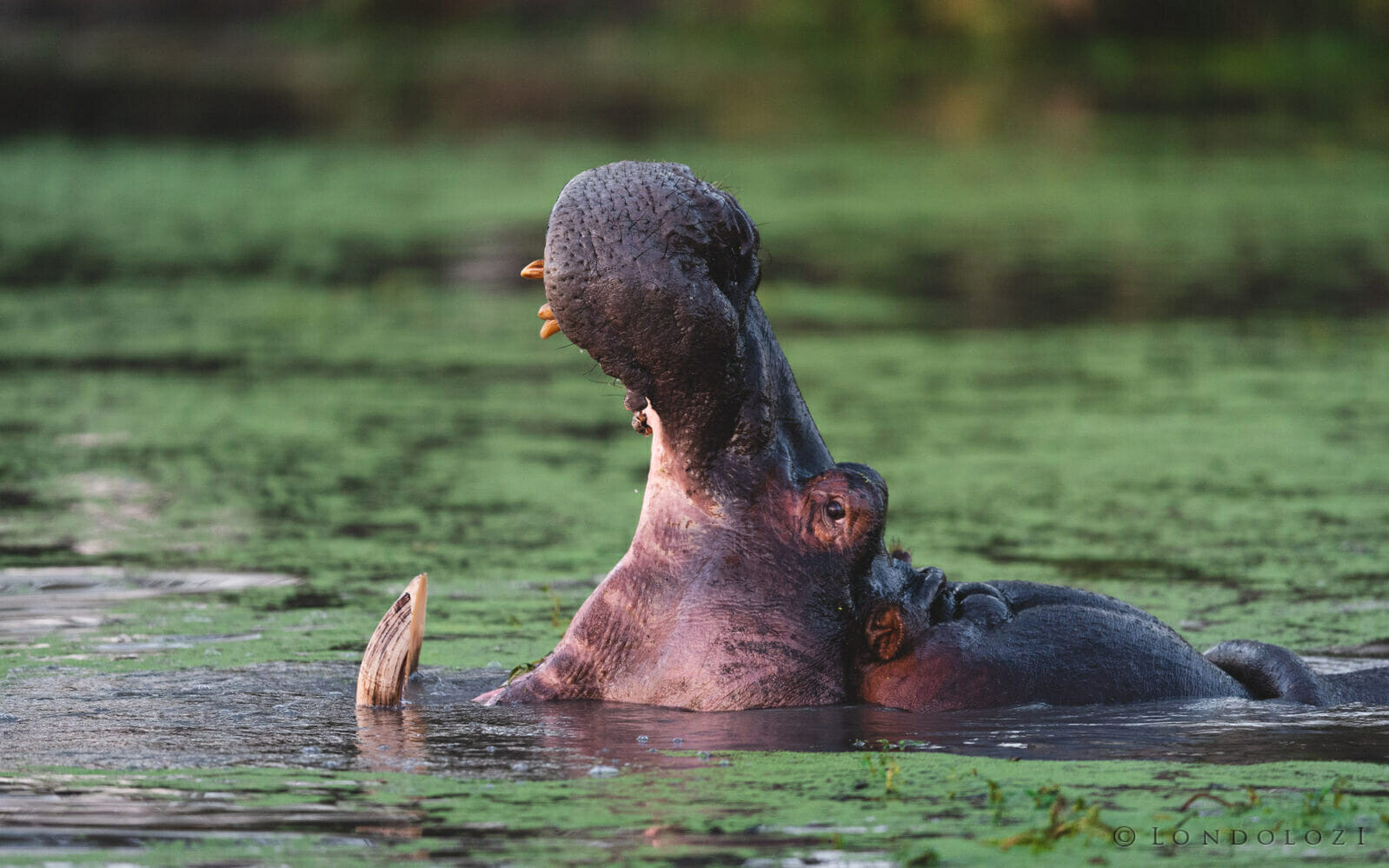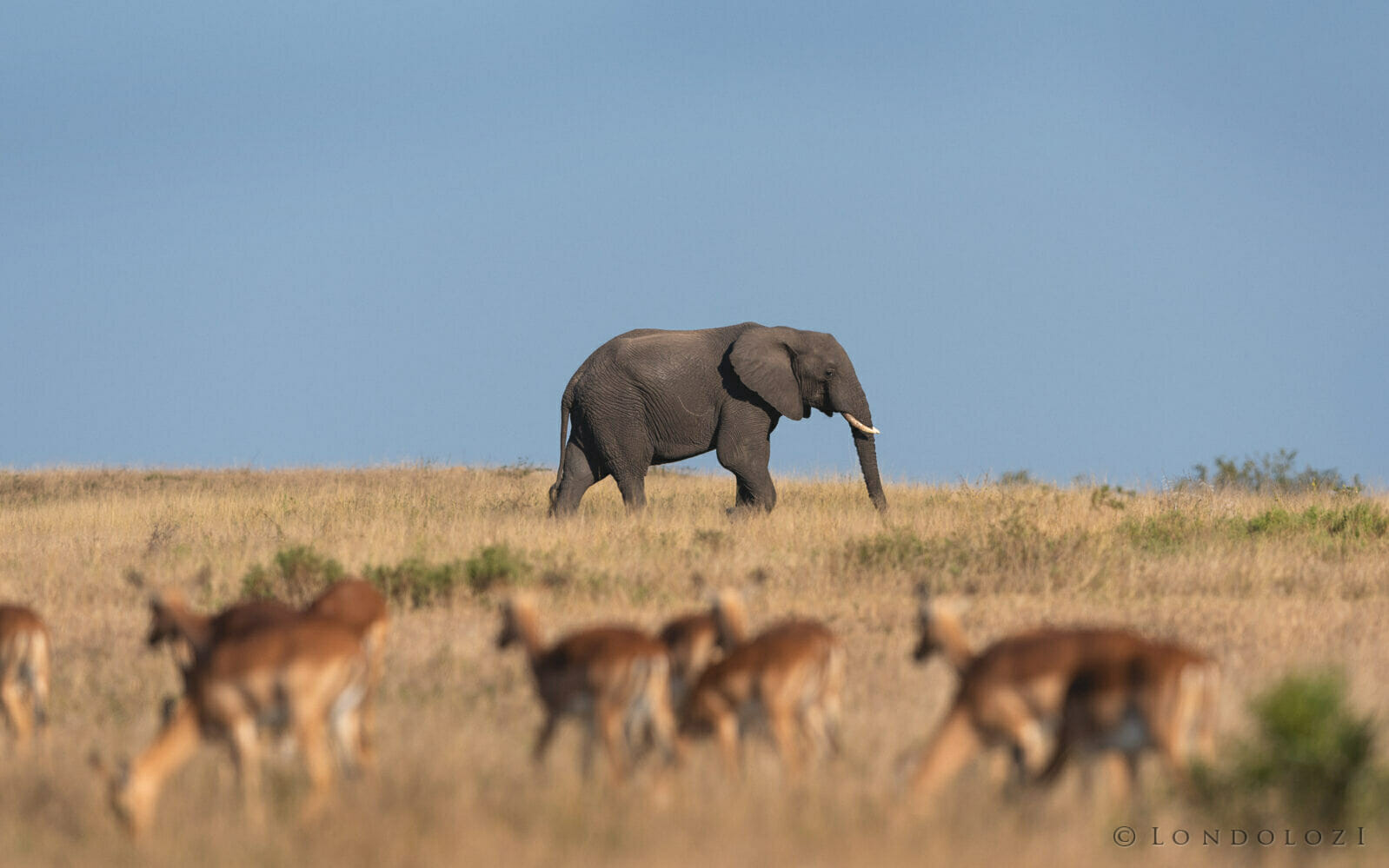While out on drive, there is often a lot of contemplation surrounding the fact that the largest mammals we see here are all herbivores.
“A herbivore is an animal anatomically and physiologically adapted to eating plant material”
Looking into the evolution of each of these mammals, it is interesting that each of the five largest herbivores (approximately 1000+ kg/2200 + pounds) have distinct combinations of diet and digestive systems. As Robbie Ball recently discussed in a previous blog about evolution, it always fascinates me how every species has evolved to fulfil a specific niche in the ecosystem, and how every species’ survival depends on this entangled web of connections and balance between animal and environment.
Below is just a light introduction exploring how the dietary preferences and digestive adaptations have shaped the survival and behaviour of our largest mammals.
As a pre-curser, I recommend reading Robyn Morrison‘s recent blog, which provides a great overview and introduction to understanding the different types of digestive systems amongst many African animals.
HIPPO
The hippo is a grazing, non-ruminant foregut fermenter.

Moments before the apex of the yawn, this hippo begins to show off its impressive primary incisors (also referred to as their tusks).
Despite the bulky appearance, hippos are herbivores and primarily graze on grasses and aquatic plants using their lips to pluck the short grasslands. They most often venture out at night to graze and only need to consume up to 60 kg/150 pounds (c. 1.5% 3% of body weight) of vegetation in a single night – this amount of graze is much lower than most other herbivores. Hippos require less food than their body size would suggest because they tend to save a huge amount of energy by spending most of their time in the water resting during the day (which is not subject to great temperature fluctuations found in terrestrial habitats).

Not a usual sighting getting to see hippos out of the water amongst the vegetation, especially in daylight!
While not true ruminants, hippos have a specialized three-chambered stomach that allows them to ferment and break down cellulose effectively, although they do not chew the cud. This process releases essential nutrients from the fibrous plant material.
GIRAFFE
The giraffe is a browsing ruminant.

We spent a good twenty minutes with this giraffe, watching it intricately pick the leaves off a very thorny buffalo thorn bush.
Giraffes are browsers, which means they feed on leaves, buds, and fruits of trees and shrubs. Their long necks allow them to reach the most nutritious tree leaves high up in the canopy that other animals cannot. In addition, their narrow muzzle and long tongue, often over 45 cm in length, allow them to pluck the most nutritious leaves with the highest protein content from between big thorns.
Because of their size, giraffes have a relatively low metabolic mass (about 17% of their body mass) and therefore obtain sufficient energy from consuming only 3.4% of their body weight in browse per day.

Even though the neck of a giraffe can be up to two meters long, they only have seven neck vertebrae – the same number of neck bones that humans have!
Giraffes have a complex four-chambered stomach that aids in the fermentation and digestion of fibrous plant material. They rely on gut bacteria to break down cellulose and extract nutrients from tough foliage, making them the largest ruminant. The high quality of a giraffe’s food source allows for easy breakdown into very small particles and thus reduces gut retention time. Giraffes have a relatively fast digestion process.
WHITE RHINO AND BLACK RHINO
The white rhino is a grazing hindgut fermenter, while the black rhino is a browsing hindgut fermenter.

The three largest herbivores (elephant, rhino and hippo) can get by with as little as 2% of their body mass in dry food per day.
White rhinos are grazers and primarily consume grass, whereas black rhinos are browsers and favour leaves, fruits, and woody plants.
White rhino’s teeth have adapted to crushing grasses thoroughly before swallowing, while black rhino’s hooked lip assists them similarly to a giraffe’s narrow muzzle when browsing highly nutritious leaves.
Unlike ruminants, rhinos have a simple, single-chambered stomach. To extract maximum nutrition from their plant-based diet, rhinos have an extended digestion process that relies on fermentation in the hindgut.
ELEPHANT
The elephant is a mixed-feeding hindgut fermenter.
Elephants are among the most iconic and intelligent creatures on the planet. Their dietary preferences and digestive capabilities are critical to their survival as the largest land animals.
Elephants are strict herbivores, consuming a wide range of plant material, including grasses, leaves, bark, roots, and fruits, depending on the region and the availability of food. Despite their size, they have a relatively low metabolic mass (about 15% of body weight), which means they require proportionately less food energy than other mammals (for example, zebra have a metabolic mass of 25%).
Elephants have a single-chambered stomach similar to that of a typical herbivore. Their hindgut fermentation process helps break down cellulose and extract nutrients from tough plant matter. Due to their diet, elephants must consume a large quantity of food each day to meet their energy requirements.

A Red-billed Hornbill sifts through elephant dung to locate any insects feeding on the decomposing grass material
Rhino-alike, hindgut fermentation is advantageous for these mega-herbivores, as it allows them to process large quantities of food rapidly. The challenge, however, is that digestion this way is less efficient than that of a ruminant. Food, therefore, needs to be consumed in large amounts as much of it will be excreted in the form of poorly digested dung.
From the water-loving hippos to the tree-reaching giraffe, the grass-grazing rhinos, and the versatile elephants, these animals play crucial roles in their ecosystems. Understanding their distinct combinations of diet and digestive systems not only provides valuable insights into their ecological significance but also highlights the delicate balance of nature that sustains them. As we continue to appreciate and protect these incredible animals, we also recognize the importance of preserving their habitats for generations to come.



















Great pictures. I especially like the 3 elephants in a row, I think we were with Matt for the elephant and hippo pictures he shot!!
Wonderful blog Kate. Nature truly evolves in many different ways. I wonder what we as humans will look like and act like in say 20 or 30 million years? Evolution and survival linked together, interesting.
Thank you Kate for explaining the digestive system of these herbivores. The different chambered stomachs of the different animals to the different diets is very interesting. All five herbivores are beautiful animals and are needed for the eco system.
Really very interesting blog, Kate on these different and large herbivores.
Beautiful photos as well.
Thanks Kate for expanding on Robyn’s blog highlighting the the evolution of animal’s digestive systems. What is the most interesting is the difference in eating habits between the white and black rhinos. That in itself brings to mind, what caused the physical difference between these two mammals that changed the shape of their mouth opening? Aside from that thought, the biggest takeaway from your blog, besides what they eat and how it’s digested, is how their excreted vegetation supports other species.
Hi Kate, they are all special and iconic mammals. Elephants are in my heart since I was a young girl and read Life with Elephants by Ian Douglas Hamilton, giraffe are so fantastic and I have a soft spot for hippos, I recently watched Hippo King, a wonderful documentary of a full life of a hippo bull from his birth to his death
Great article, Kate!!
Very informative blog. And the added tidbit on the graffiti’s vertebrae. Doesn’t seem possible.
Such a delicate balance is life…
Also great photos… Thank you
Kate, This is really great info and helped us understand a little more about of the behaviors of the herbivores. Well done!